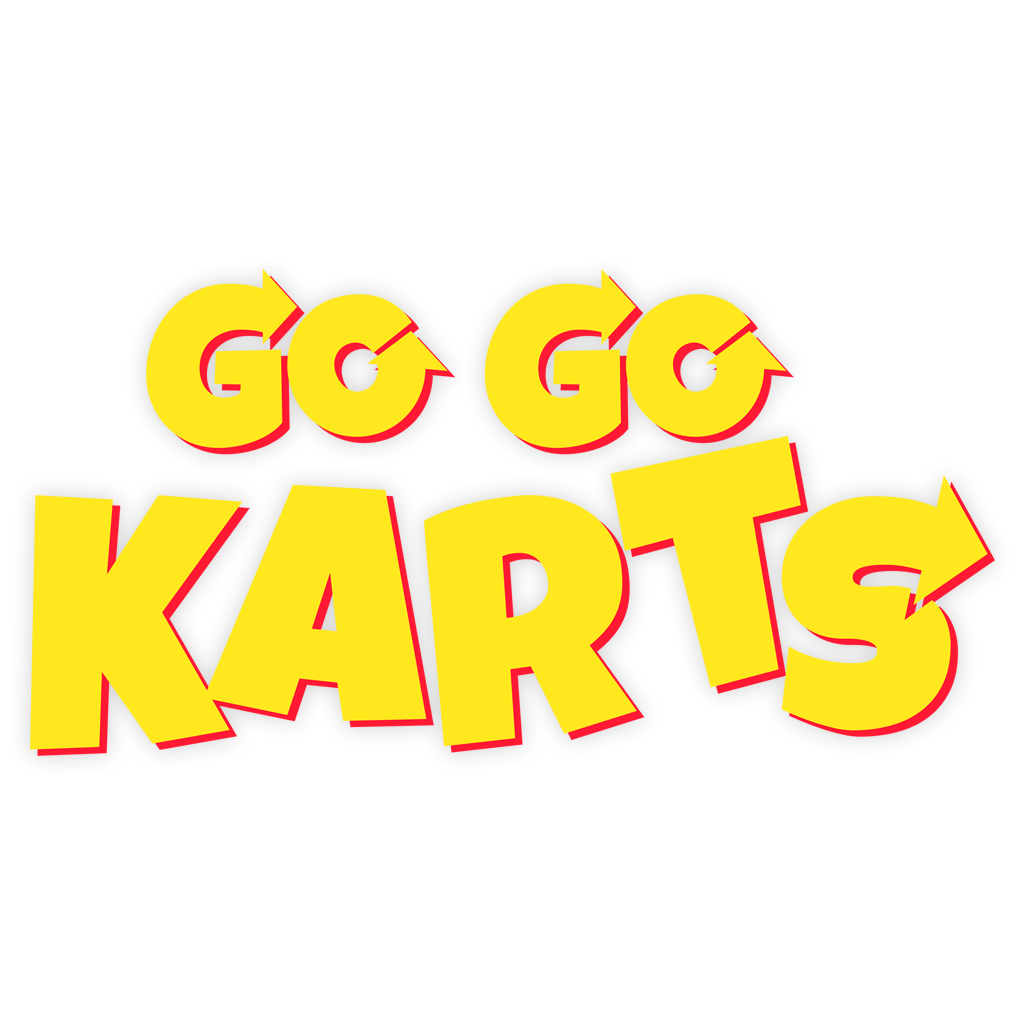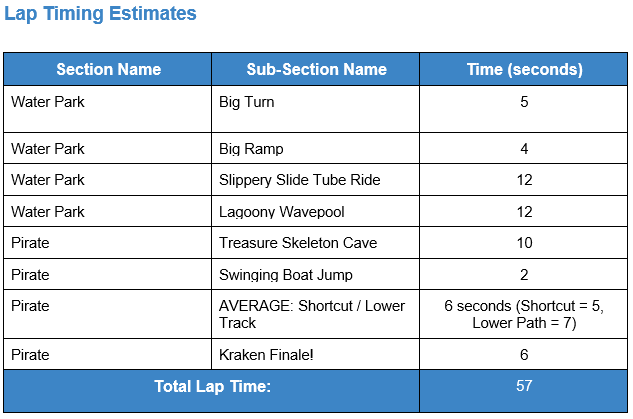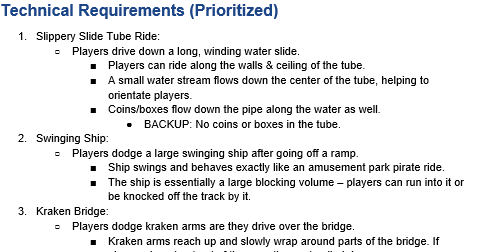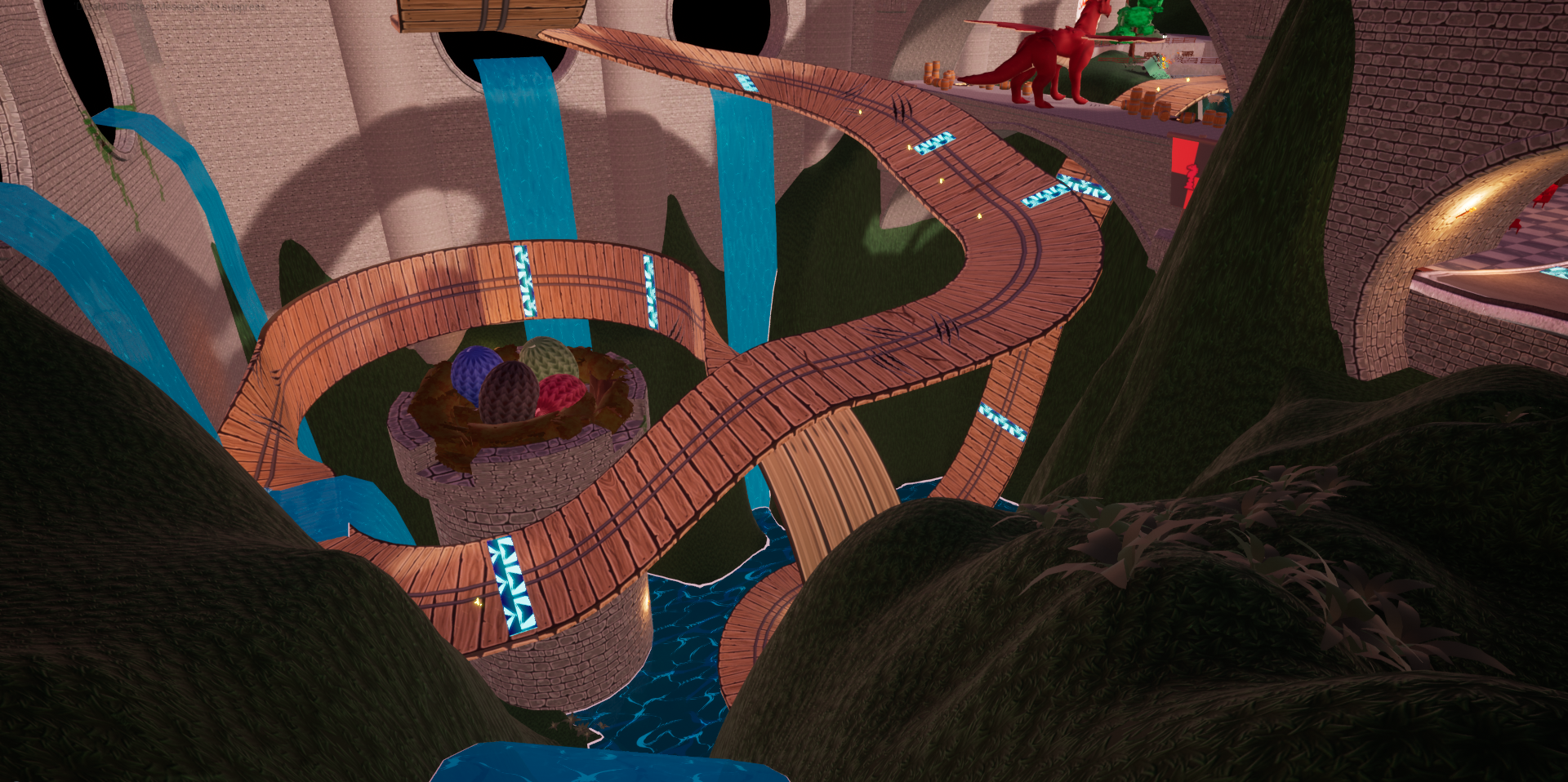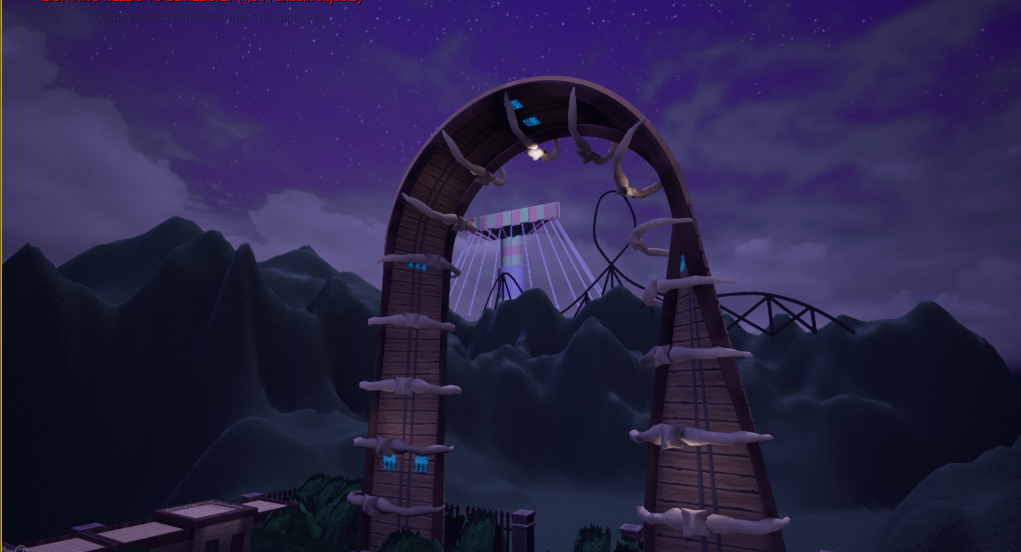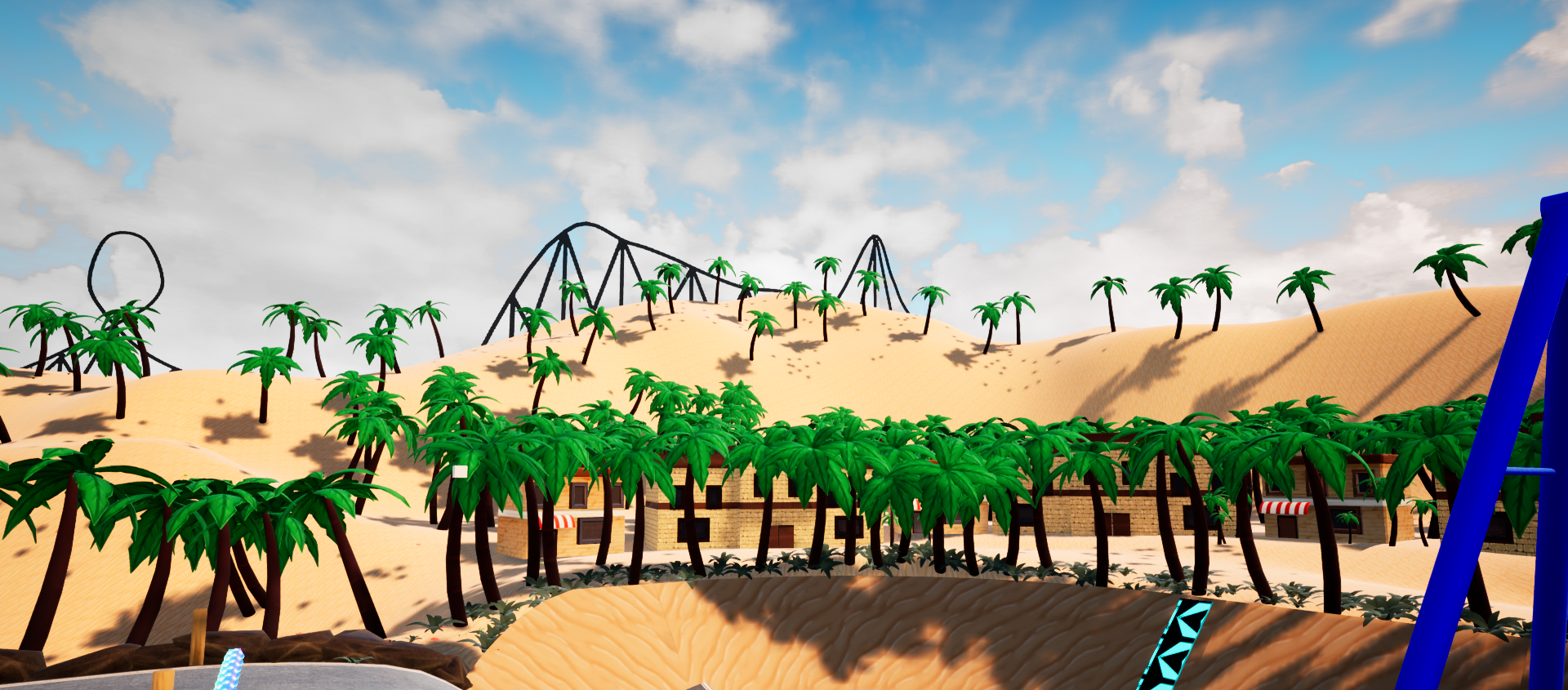Overview
Go Go-Karts is a 3D arcade multiplayer couch racer that is set in the fantastic Fable World, a magical theme park where legends and myths are real. Adventure awaits, and legends will be built in the wonderful land of Fable World!
Responsibilities
Co-Designed the pirate level, one of the three final racetracks in game. Responsible for: the initial LDD, 3D map model, track placement, and directing the vision to teammates during production.
Collaborated with artists to both design and place modular and custom track pieces.
Framed, cut, and edited the cinematic opening sequences to all three racetracks.
Created the surrounding landscapes on all three racetracks using UE4’s terrain and foliage tools.
Presented at four milestone meetings as a team-member with expert knowledge.



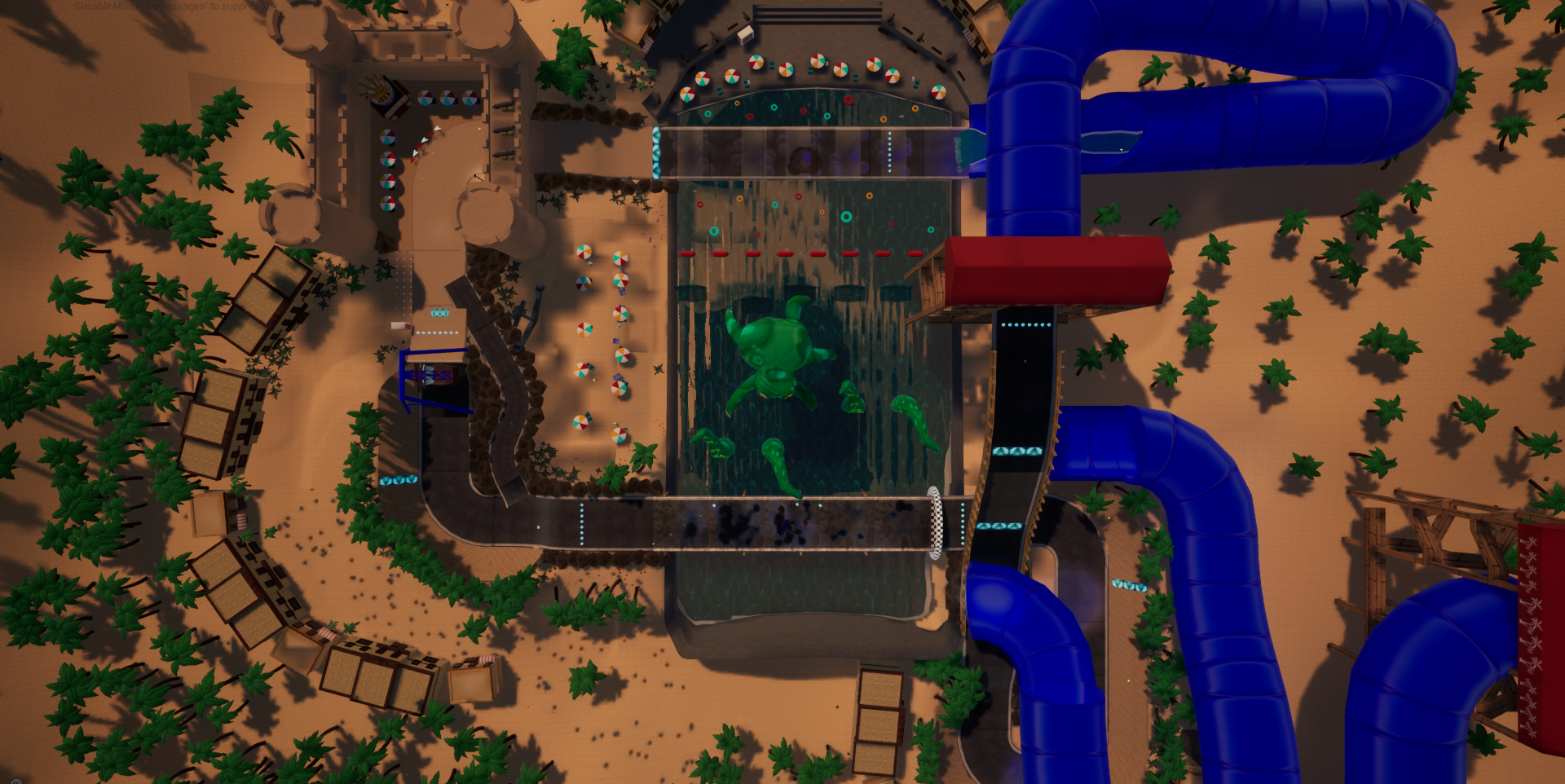
Pirate Map: Design Process
Level Design Document: Link (Pages 7-14 represent my work)
Map Model:
Using 3DS Max, I created a 3D model version of the track to better communicate the overall flow of the intended track. Using this, artists were able to get a sense of the modular pieces that would need to be designed to create this track.
Time Estimates:
In order to achieve consistent feeling tracks, I also created time estimates for each section to ensure each lap was around 1 minute. Additionally I created a list of technical specifications outline for software developers intended functionality & proposed backup plans.
Cinematic Level Introductions
While my primary role on this project was a member of the track and environment team, I was also asked to create the cinematic level introductions for all the levels.
Before creating these with Unreal’s Sequencer tool, I collected references by studying arcade racers such as Mario Kart to get a better sense of the optimal number & length of shots to have when designing these openings.
Terrain Creation
I also sculpted the terrain showcased above and in the intro clips. In the case of the medieval map, this also included the placement and design of all of the waterfalls. Additionally, I was responsible for many of the foliage elements such as the trees in the Pirate level, and the shrubs in Medieval.
Post Mortem
What Went Well:
Sub-team communication: As a 15-person sub-team, Track & Environment had to collaborate a ton in order to get the tracks built and polished within the time we were given.
Open yet constructive criticism: I was able to call meetings with the leads and producers during the project to express concerns and difficulties on behalf of the Track & Environment team. These meetings were encouraged by the leads and led to a more positive development pipeline.
Team Trust: I had a lot of faith in my teammates, and I felt confident sharing my design ideas for the Pirate map so that my teammates could implement the level successfully. Likewise, I felt trusted by my teammates and was able to assist on many elements of the game.
Challenges:
Communication across teams: Towards the beginning of the project it was quite difficult to collaborate between the Track & Environment team and the Kart-Feel team. Specifically, the changes made to make the kart feel better would often cause repercussion in the designs of the track and vice-versa. Mid-way through the project, we identified this issue and adjusted our communication pipelines.
Unclear project goals: it often felt difficult to know where the game was heading and why. A lot of project planning seemed to take place behind closed doors and it was often difficult to know what to focus on in team planning and when plans might change. This issue was raised and our team took steps to become more transparent with direction.
What I learned:
How to work on a large team: I learned a lot by working towards a team game vision rather than my own. I also learned how important it is to keep asking for clarification and restating my current understanding and design intentions to make sure that everyone is ultimately on the same page.
Presenting information multiple ways: Communicating my design intentions out to my teammates was different than how I would communicate it to the Game Designer and was different than how I would communicate it to the stakeholders when I was asked to present on behalf of the Track & Environment team at some of the milestone presentations.
Co-Designing a level: It was a great experience to co-design a level and one that definitely strengthened my communication skills in a new format. Ultimately, I think this is why the level had as much success as it did and was an incredibly beneficial skill to learn.
